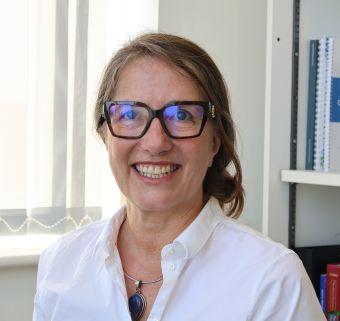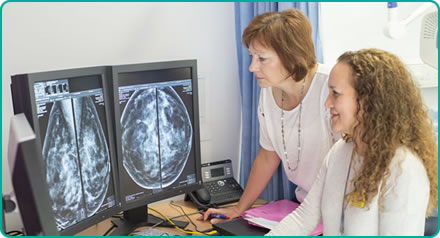
A new study is investigating whether FAST MRI, a new type of scan, can help detect small but aggressive breast cancers earlier.
Now open to patients, the NBT-led FAST MRI DYAMOND research study is the culmination of nine years of the FAST MRI Research Programme.
In the first of a series of blog posts, Lyn Jones, the study’s Chief Investigator, describes what is has taken to get to this point.
Sometimes serendipity plays a part in research. In 2014, the Bristol Breast Care Centre opened, bringing all Bristol’s breast care services under one roof for the first time. It was purpose-built for us within a beautiful old building in the grounds of Southmead Hospital. This move massively improved our opportunities to undertake research as it meant we had a dedicated research team on the same site as both our breast screening and breast clinic services.
Bringing life-saving technology to the NHS
In the same year, researchers in Germany published a scientific paper suggesting a short breast MRI scan could pick up more than twice as many breast cancers than mammograms for women at increased risk of breast cancer. The name of this imaging technique was FAST MRI.
In the paper FAST MRI found breast cancers much smaller and earlier than mammograms.
I remember being so excited when I first read it because the earlier a breast cancer is detected and treated the more likely it can be cured. I immediately knew that I wanted to bring this technique to the NHS and to Bristol as a tool that could help us to save more lives from breast cancer.
Of course, there were so many questions still to be answered about FAST MRI before it could be introduced into clinical practice. This meant embarking on a research programme to gather the evidence needed to demonstrate that the NHS could use FAST MRI effectively.
Building the case for FAST MRI
The Research and Development Department at NBT encouraged me and supported me to meet people who could help me to undertake this work. Slowly we built a research team, including members of the public and breast cancer survivors, statisticians and medical physicists, psychologists and computer scientists. Together, we decided the first step should be to find out if the NHS Breast Screening Programme (NHSBSP) workforce that interprets breast screening mammograms could also interpret FAST MRI.
Learning to read FAST MRI scans

We designed an interpretation training programme and tested it at multiple NHSBSP sites across England. This work has shown that with just two days’ training, mammogram readers can adapt their skills to effectively read FAST MRI scans to a high standard
One of our training studies was funded by a small grant from the National Institute for Health and Care Research (NIHR) through their Research for Patient Benefit funding stream. We had enough money over from this grant to fund work with the Medical Physicists of our partner NHS Trust in Bristol, University Hospitals Bristol and Weston (UHBW), to design and build ‘breast phantoms’ for use with FAST MRI.
A breast phantom is an object about the same size and shape as a breast that you can put into an MRI scanner to test how well a breast scan works by looking at the quality of the images the scanner produces. The team made one phantom (See page 5, heading P01) that tests how much detail (spatial resolution) a breast scan can show, and a second phantom that tests how much variation from dark to light is shown in an image (dynamic contrast).
Setting up DYAMOND for patients
These two phantoms are currently being incredibly useful as we set up different NHS sites across the country to take part in the FAST MRI DYAMOND study.
DYAMOND is the first of our studies that is inviting women to have a FAST MRI scan. We are recruiting women who are having their first screening mammogram at age 50-52 in Bristol, Truro, Cheltenham, Swindon and London. We then offer a FAST MRI to those with average mammographic density. This is a measure of a breast’s internal structure as seen on a mammogram.
DYAMOND is an important step because it will tell us if women who do not have an increased risk of breast cancer could also benefit from a FAST MRI scan.
If you are around 50-52 years of age and have just had your first screening mammogram, you may be able to take part in DYAMOND.
